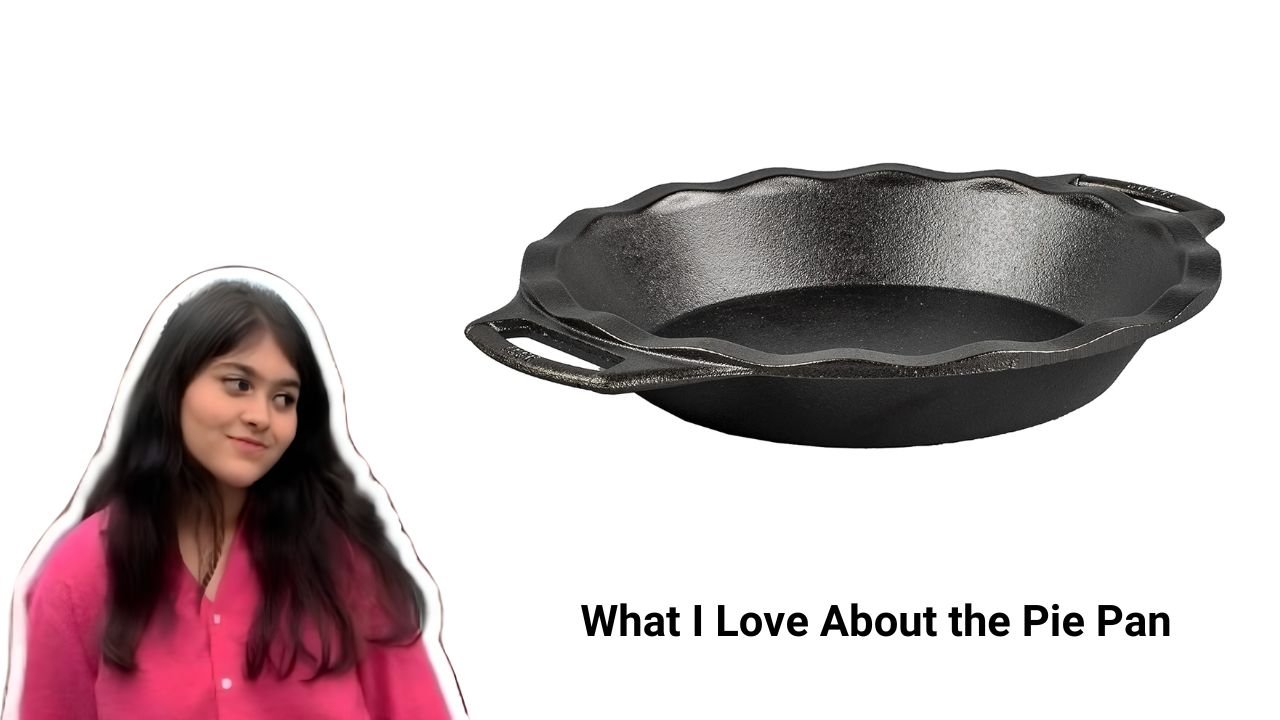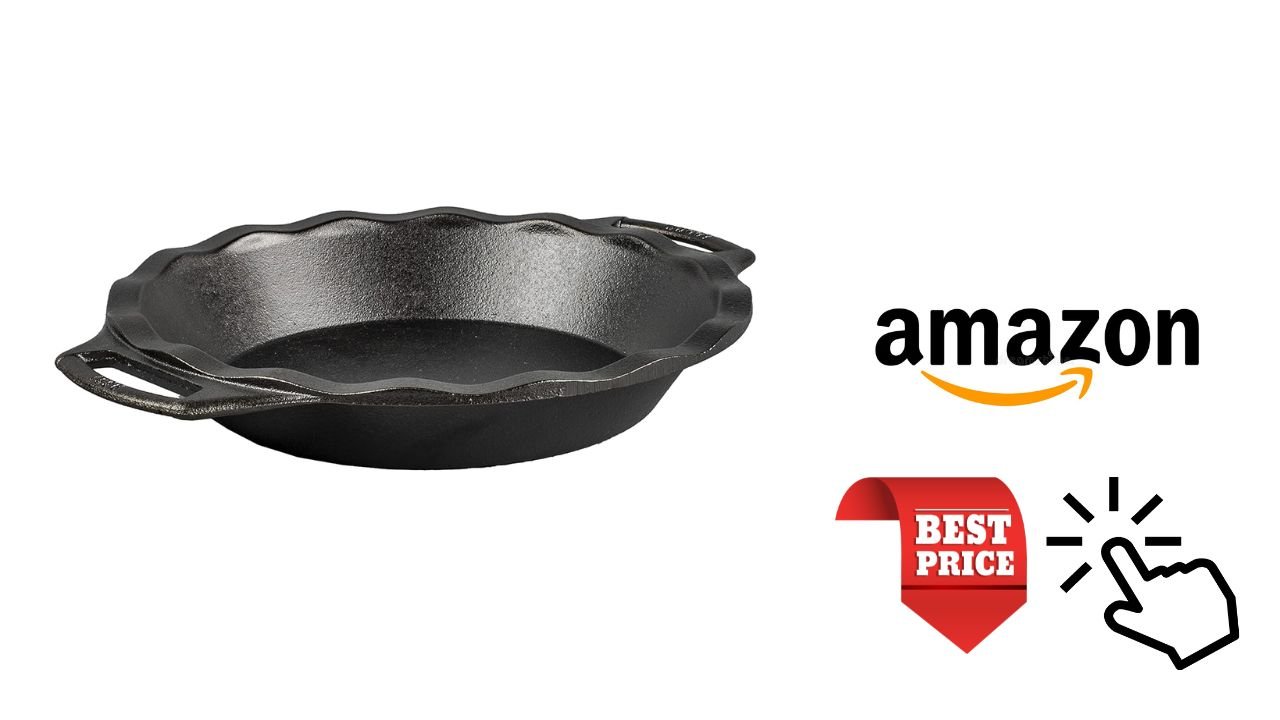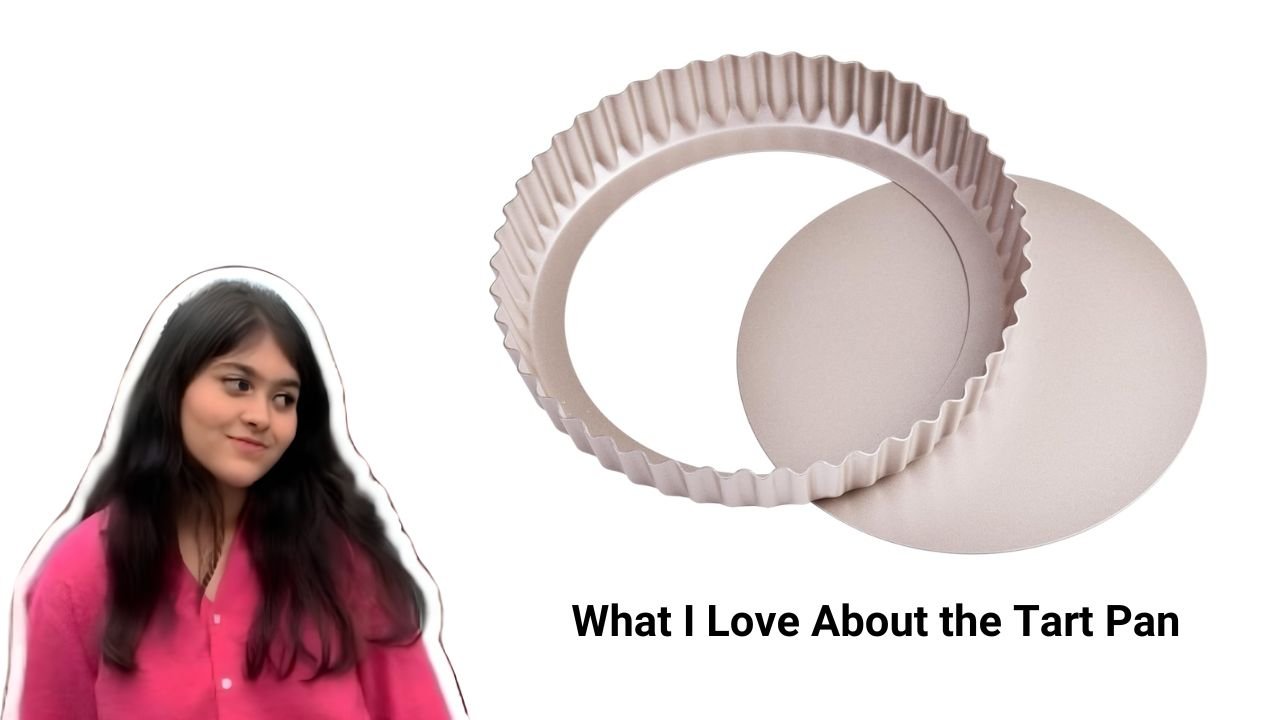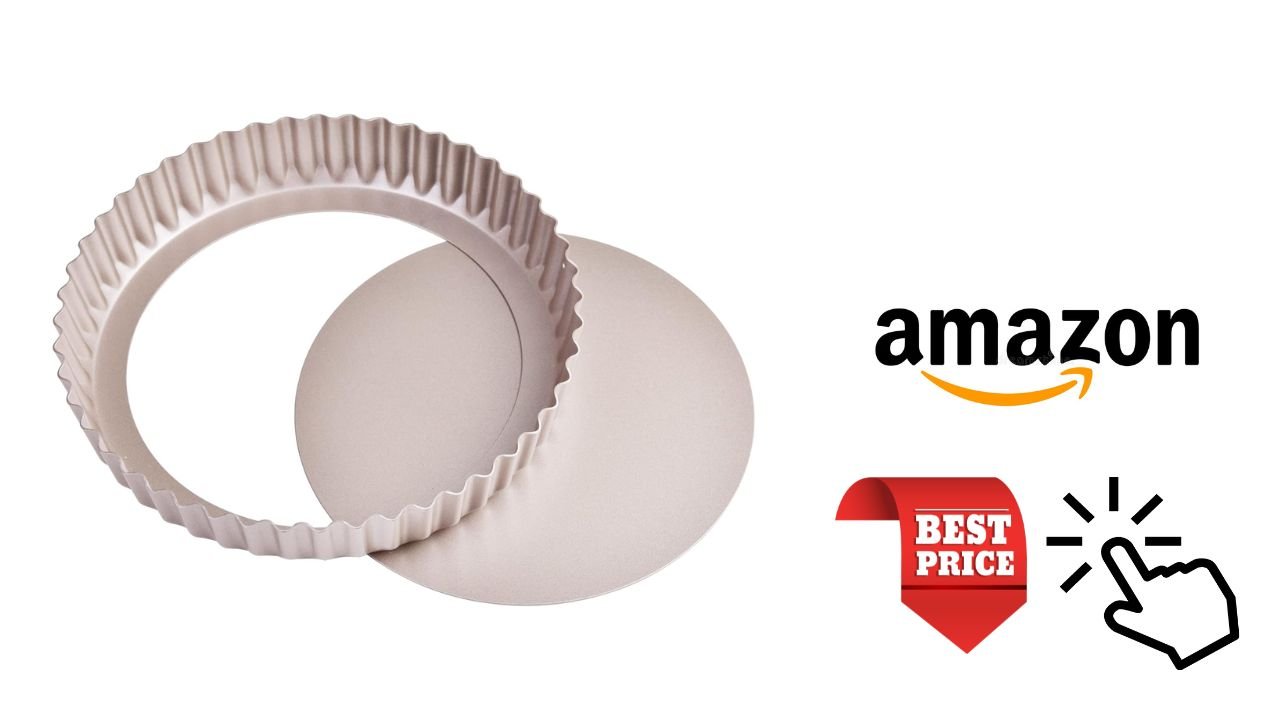When comparing Pie Pan vs Tart Pan, the pie pan is better for versatile recipes, while the tart pan is ideal for creating elegant, crisp desserts with clean edges and removable bottoms.
When it comes to baking, selecting the right equipment can make or break a dish. One common dilemma I’ve encountered in my kitchen journey is deciding between a pie pan and a tart pan. Both are essential for different types of recipes, but they each come with their own unique features and quirks. Whether you’re trying to make a flaky pie crust or a perfectly shaped tart, understanding the differences between these two pans will help you achieve the best results. In this article, I’ll share my personal experiences with both pans, along with their strengths and weaknesses, so you can confidently choose the best one for your baking needs.
What’s the Difference Between Pie Pans and Tart Pans?
Before diving into the specifics, it’s important to understand the general difference between a pie pan and a tart pan. While both are used for baking, they have different shapes, sizes, and features that make them suited to specific kinds of baked goods. Let’s break them down:
- Pie Pan: This pan is typically deeper, with sloped sides, making it perfect for creating hearty pies, including apple pie, pumpkin pie, and quiches. The depth of a pie pan allows it to hold plenty of filling without the risk of spilling.
- Tart Pan: Tart pans are usually shallower with straight sides and often come with a removable bottom. This makes it easier to remove delicate tarts from the pan without disturbing their perfect shape. Tart pans are designed for more elegant desserts such as fruit tarts, lemon tarts, and quiches with a crisp, thin crust.
In this article, I’ll compare both pans in terms of their material, design, versatility, ease of use, and performance so that you can decide which one is best for your needs.
Pie Pan: The All-Rounder for Comfort and Convenience
Baking pies has always been a passion of mine, and over the years, I’ve found that the pie pan is the unsung hero of my kitchen. I’ve tested several brands and materials, and I can confidently say that this pan is perfect for beginners and seasoned bakers alike.
What I Love About the Pie Pan
- Versatility: A pie pan is an all-purpose tool in the kitchen. It works wonders not only for pies but also for quiches, cobblers, and even savory dishes like pot pies. The options are limitless, and it’s easy to transition from sweet to savory recipes with this pan.
- Quality Materials: Pie pans come in several materials such as glass, ceramic, and aluminum. I prefer ceramic for its even heat distribution, which ensures a perfectly cooked crust every time. The aluminum pans are lightweight and quick to heat up, while glass pans allow you to see your baking progress easily.
- Non-Stick Options: Many pie pans come with a non-stick coating, which makes cleaning up after baking a breeze. This feature has saved me countless hours of scrubbing.
- Affordable and Reliable: Whether you’re looking for a budget-friendly option or a higher-end ceramic pan, there are plenty of choices that won’t break the bank.
What Could Be Better About the Pie Pan
- Sizing Confusion: One downside I’ve experienced is the confusing size options. Different brands have different methods of measuring, so it’s important to measure the inner diameter yourself. This is a small issue, but it can be frustrating if you’re following a recipe and the pan doesn’t quite match the required size.
- Limited Color Choices: While ceramic pie pans are beautiful, the color options can be a bit limited. I’d love to see more vibrant colors to match my kitchen décor.
- Weight of Ceramic Pans: Ceramic pie pans are generally heavier than other materials, which may not be ideal for everyone, especially if you prefer lightweight tools.
Tart Pan: Elegance Meets Precision in Baking
For me, tart pans have become a new best friend. Initially, I found the design and the removable bottom a bit intimidating, but once I got the hang of it, I realized just how beautiful and professional the results can be. If you love elegant desserts like I do, you’ll appreciate the craftsmanship that goes into a good tart pan.
What I Love About the Tart Pan
- Professional Finish: One of the best features of a tart pan is its ability to create crispy, even crusts. The straight edges help shape the crust perfectly, and the fluted edges give it a beautiful, polished look.
- Removable Bottom: This feature is a game-changer. It makes removing delicate tarts easy and keeps the crust from breaking. I’ve used several tart pans with this removable bottom feature, and it has never failed me.
- Great for Elegant Desserts: Tart pans are ideal for creating visually appealing treats. The even edges and crisp crusts allow me to create impressive lemon tarts, chocolate tarts, and other delicacies that wow my guests.
- Versatility in Size: You can find both mini and regular-sized tart pans, which is great if you want to bake individual servings or large tarts for special occasions.
What Could Be Better About the Tart Pan
- Delicate Care Needed: Tart pans often come with a non-stick coating, which works wonderfully for easy crust removal, but it also requires a little more care. Avoid using metal tools on the surface, and always hand wash it gently to prevent damaging the non-stick layer.
- Rusting Issues: If you leave a tart pan wet or don’t dry it properly, it could develop rust over time. I’ve learned to always dry it immediately after washing to prevent this.
- Shallow Depth: Some tart pans have a very shallow depth, which limits their use for layered or deep tarts. If you need to make a deep tart with lots of filling, this could be a limitation.
Pie Pan vs Tart Pan: Key Comparison
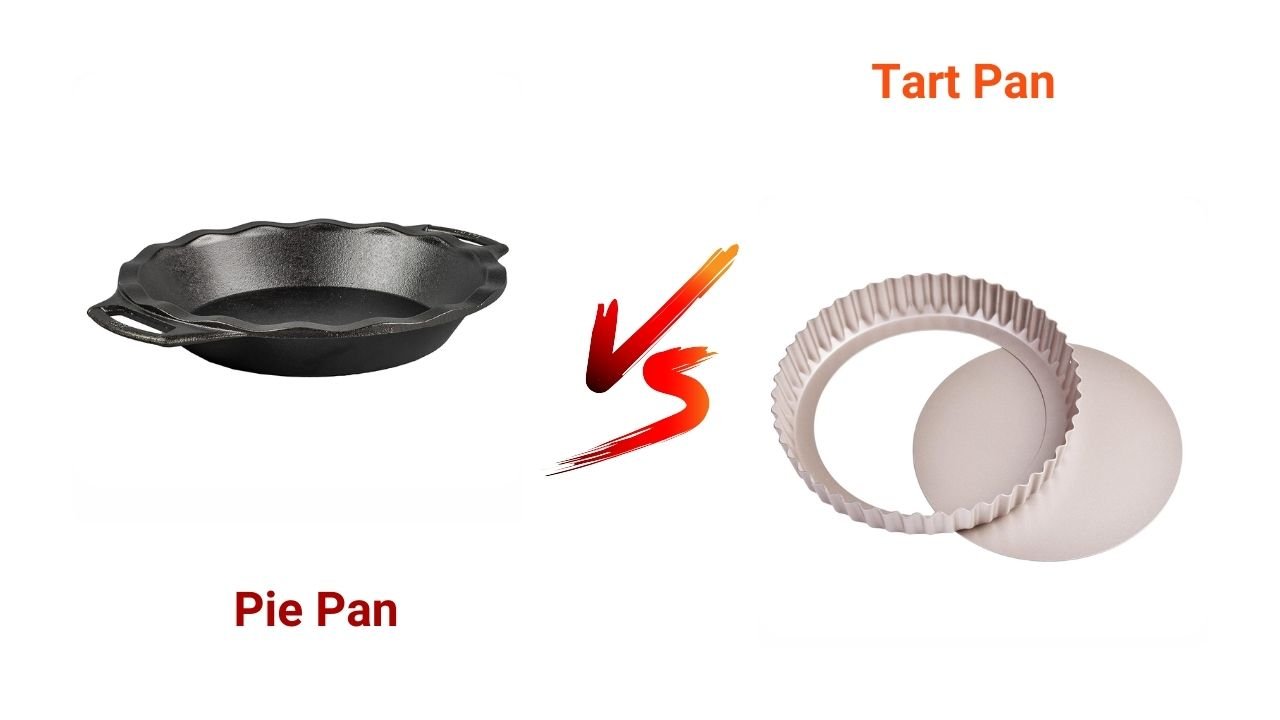
When choosing between a pie pan and a tart pan, it’s helpful to compare their features side by side. Below is a breakdown to help you make an informed decision.
Material Quality: Pie Pan vs Tart Pan
| Feature | Pie Pan | Tart Pan |
|---|---|---|
| Material Options | Glass, ceramic, aluminum | Carbon steel with non-stick coating |
| Durability | Scratch-resistant, long-lasting | Needs extra care to avoid damage |
| Heat Retention | Bakes evenly | Heats quickly, but can burn if not monitored |
| Best For | Versatile baking, pies, quiches, casseroles | Tarts, flans, delicate desserts |
| Winner | Pie Pan (for durability and even baking) | Tart Pan (heats up faster, ideal for tarts) |
Depth and Design: Pie Pan vs Tart Pan
| Feature | Pie Pan | Tart Pan |
|---|---|---|
| Depth | Deeper, perfect for filling | Shallow, ideal for sleek, thin crusts |
| Edge Style | Smooth edges | Fluted edges for a more elegant look |
| Handling | One-piece design | Removable bottom for easy release |
| Winner | Pie Pan (more versatile and easy to handle) | Tart Pan (for professional-looking tarts) |
Baking Versatility: Pie Pan vs Tart Pan
| Feature | Pie Pan | Tart Pan |
|---|---|---|
| Uses | Pies, quiches, casseroles, savory dishes | Tarts, flans, quiches, fruit desserts |
| Serving Sizes | Regular and deep-dish options | Mini and regular-sized tarts |
| Learning Curve | Easy to use | Requires some practice for perfect results |
| Winner | Pie Pan (ideal for a wide range of recipes) | Tart Pan (best for specific, elegant dishes) |
Read More: Acacia vs Bamboo Cutting Board: My Honest Thoughts
FAQs About Pie Pan vs Tart Pan
Can I use a pie pan instead of a tart pan?
While you can use a pie pan for tarts, the results won’t be the same. The sloped sides of a pie pan don’t offer the sharp, clean edges that a tart pan provides. Also, the tart pan’s removable bottom makes it easier to remove delicate tarts.
Why do tart pans have removable bottoms?
Tart pans have removable bottoms to allow for easy removal of the tart once it’s baked. This helps prevent the crust from breaking, giving the tart a clean, professional finish.
Which pan is more versatile, a pie pan or a tart pan?
Pie pans are more versatile as they can be used for a variety of recipes, including pies, casseroles, quiches, and even some savory dishes. Tart pans, on the other hand, are more specialized for desserts like tarts, quiches, and flans.
Can I make a deep-dish pie in a tart pan?
While you can technically use a tart pan to make a deep-dish pie, it’s not the best choice. Tart pans are typically shallow, so they won’t provide the depth needed for a traditional deep-dish pie. The filling might spill over the edges or not cook evenly due to the lack of space. For deep-dish pies, it’s better to stick with a pie pan, which is designed to hold larger quantities of filling.
Are tart pans only for sweet recipes?
Not at all! While tart pans are often associated with sweet treats like fruit tarts or lemon tarts, they are also great for savory dishes. I’ve used tart pans to bake savory quiches, flans, and even small savory pies. The removable bottom allows for easy removal of the tart, whether it’s sweet or savory.
Why do some pie pans have a raised edge?
Some pie pans feature a raised edge, often called a fluted edge or decorative lip. This feature can be helpful for giving your crust a more polished, finished look, and it’s perfect for pies with a crust that you want to crimp or decorate. The raised edge also helps with holding the pie crust in place, reducing the likelihood of it shrinking or sagging.
What’s the best material for a pie pan or tart pan?
The best material depends on your baking preferences. I personally love ceramic pie pans because they offer excellent heat retention, providing an even bake and a crispy crust. However, aluminum and glass pie pans are also great options for more even heat distribution and lighter weight. For tart pans, carbon steel is a top choice due to its durability and non-stick properties, though it requires extra care to maintain the coating.
Can I use a tart pan for a cheesecake?
Yes! A tart pan can be used for a cheesecake, especially if you’re making a no-bake cheesecake or a cheesecake with a crumbly crust. The removable bottom makes it easy to take the cheesecake out without damaging its appearance. Just keep in mind that tart pans are shallow, so if your cheesecake has a thick layer of filling, you might want to use a pie pan instead for better depth.
How to Choose the Right Pan: Pie Pan vs Tart Pan
When deciding whether to purchase a pie pan or a tart pan, think about the kinds of recipes you plan to bake most often. If you’re someone who enjoys baking classic pies, like apple pie, pumpkin pie, or peach cobbler, then the pie pan is likely the better choice for you. On the other hand, if you love creating elegant desserts or dishes that require a crisp and neat edge, then a tart pan will give your bakes a more polished finish.
To help with your decision-making process, here’s a quick recap:
Pie Pan: Best for:
- Versatility: Pies, quiches, savory dishes, and more.
- Durability: Long-lasting and easy to clean.
- Beginner-friendly: Ideal for those just starting with baking.
- Deep-dish recipes: Great for hearty, deep-dish pies.
Tart Pan: Best for:
- Elegant desserts: Perfect for tarts, flans, and quiches.
- Crisp crusts: Fluted edges help create professional-looking bakes.
- Removable bottom: Easy release without damaging your desserts.
- Mini tarts: If you enjoy baking individual portions, tart pans are ideal.
Final Thoughts on Pie Pan vs Tart Pan
Both the pie pan and the tart pan are essential tools for any baker’s kitchen, but choosing between the two depends on your baking style and needs. The pie pan is a more versatile and forgiving choice for beginners, making it ideal for everything from classic pies to savory dishes. However, if you’re aiming for beautifully crisp, thin crusts with a professional finish, then the tart pan is your best option.
Personally, I find both pans useful in my kitchen, and I wouldn’t give up either one. If you’re just starting out or prefer simple, all-purpose tools, a pie pan is a fantastic investment. But if you love to make elegant, restaurant-worthy desserts, a tart pan will elevate your baking game.
So, the next time you’re deciding between these two, think about what kind of baking you’re most excited about, and choose the pan that best suits your needs. Both options will serve you well and add a touch of magic to your creations. Happy baking!

Hey, I’m Nandoza Ahammad, passionate food enthusiast and creator of narzcookingcave.com, shares delicious recipes and cooking tips worldwide.

